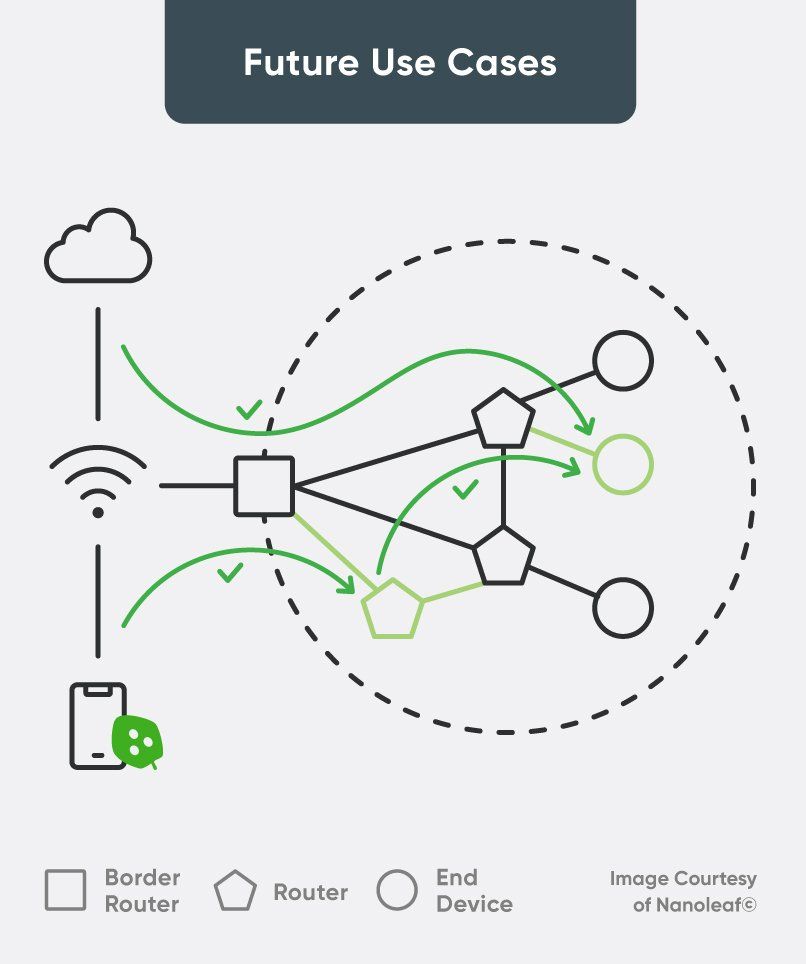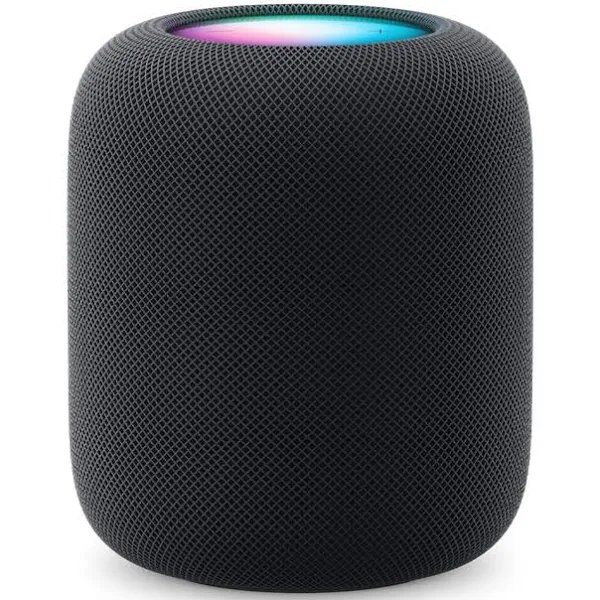5 Things Apple Could Do With the Thread Radio Chip
The internet is abuzz with talk of a "secret" Thread radio chip in some Apple devices, so let's speculate on what it could be used for in future.

Please note: This page may contain affiliate links. Read our ethics policy
The internet is abuzz with news that Apple quietly added a “secret” Thread Radio to a number of Mac, iPhone, and iPad products—but precisely why they added a Thread radio chip is not entirely clear.
Still, it's fun to speculate, so here are five things Apple could use the chip for.
Direct Control of Smart Home Devices
If your home is full of Matter over Thread sensors and devices, it might surprise you to learn that your smartphone is still using Wi-Fi to communicate with them. That’s because Thread devices need a Thread Border Router on your network to turn the physical messages into Thread signals. Your phone talks to your home router, which sends the message to your Thread Border Router, which sends the message to the Thread devices (or the other way around).
With a Thread radio inside Apple devices, they could, in theory, bypass the need for Wi-Fi or Ethernet and communicate directly to the Thread network.
Currently, your Apple device would need to be set up as a controller to communicate with the Thread accessories directly (the “multi-admin” Matter mode); this involves placing each accessory into pairing mode and sharing a new Matter QR to the additional controller.

It’s possible a future version of Matter will allow for a full home system to be easily shared without having to export each individual accessory, or allow it to bypass the Border Router entirely.
Backup Border Router
Only one Thread Border Router is used at any one time, as a link between your existing home networks and the Thread mesh network. It’s unlikely that you’d want to use an iPhone, iPad or MacBook as your one and only main Thread Border Router, as the devices tend to leave the house often and run on battery power.
More likely than direct smart home control is that any Apple device could take on the role of a Thread Border Router if your existing Router went down, as a temporary backup measure to ensure you continue to receive important notifications and maintain control of your smart home.
This would only require the Apple device to register itself as a potential Thread Border Router; the functionality to elect a new Border Router in the event of failure is already built into the Thread network. In a small home environment where you may only have one HomePod Mini to handle all Thread Routing, this would definitely be beneficial.
Faster Communications for Non-Matter Devices over Thread
Although we think of Thread as being strictly a Matter smart home technology, it’s possible to use the Thread network outside of Matter, just as you might use Wi-Fi or Bluetooth.

For instance, your iPhone could use Thread to start media playback on a Thread-equipped HomePod more quickly than over Wi-Fi. In this scenario, the actual music streaming itself wouldn’t play over Thread; it would use too much bandwidth. Thread is low latency (quick, because you want buttons and sensors to react quickly), but low bandwidth (which means it can’t handle large messages, like media). But the initial message that tells the HomePod to start playing a stream of music from a web URL or service would be quicker over Thread, than through Wi-Fi or Bluetooth.
Faster and More Reliable Than Bluetooth (Especially for Health Devices)
If you leave your smartphone in the kitchen while you go elsewhere in the house, you’ll find your Apple Watch loses a lot of functionality because it’s out of range with its link to the world. But if your Watch and iPhone were linked over Thread, you could enjoy a resilient connection throughout your home thanks to the mesh network.
This isn’t limited to an Apple Watch and iPhone either; it could be used for health equipment that really needs a reliable connection, such as a blood glucose or heart monitor. Thread’s enhanced security protocols would ensure the user’s sensitive health data is secure and privacy is respected.
It could be that Apple is eyeing Thread as a complete Bluetooth replacement for all kinds of accessories, or just to complement it with additional features. That would have the added benefit (for Apple) of locking out third-party manufacturers for a few years while they caught up and added Thread radios to their product line.
To Better Locate Devices
Within a home environment, finding your lost devices can be tricky. GPS will get to with about 50 meters, but it doesn’t work well inside your home, nor can it tell what floor of the house it’s on. If you already have a smart home full of Thread devices, all of which are assigned to a room, utilising that network to offer more precise positioning might be possible—similar to Bluetooth beacons. Your phone could use Thread to detect which devices are near to it and, therefore, what room it’s currently in, enabling you to quickly locate it (“Your iPad is in the kitchen”).

Apple already has a precise positioning chip that points the way in recent devices, but you need to be in the general vicinity before it can work. Thread might allow the Find My app to get you to the correct room, then the precise positioning would take over. No more losing your phone down the back of the sofa!
It Could Also Be ... Nothing
To be clear, the Thread radio chip inside numerous Apple devices has not been switched on or used yet, so this is entirely speculative. It could be that it’ll never be used and only exist because the core communications chip includes a Thread radio alongside the Wi-Fi and Bluetooth ones. The NXP IW612 is one such “tri-radio” chip.
It’s always good to future-proof a product, but that doesn’t mean it’ll necessarily be activated.
About the Author

James Bruce
Smart Home Contributor, Videographer, and Developer
James spent seven years in Japan, where he brought technology into the classroom as a teacher and worked part-time as a data centre engineer. Formerly the CTO and Reviews Editor of MakeUseOf, he has also contributed to publications like TrustedReviews, WindowsReport, and MacObserver. With a BSc in Artificial Intelligence, James combines his technical expertise with a passion for writing, programming, and tech reviews. Now based in Cornwall, he enjoys the slower pace of rural life, building LEGO, playing board games, and diving into VR.

Apple HomePod (2nd Gen)
The HomePod (2nd Gen) is a powerful hub from Apple that delivers immersive, high-fidelity audio and intelligent assistance, while seamlessly integrating with your Apple devices and smart home accessories; it's also a key component for Matter compatibility, ensuring broad connectivity with a range of smart home devices.